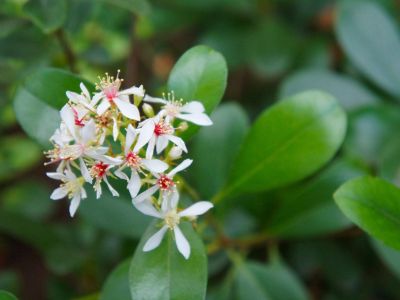How to Grow Indian Hawthorn
Indian hawthorn is an evergreen, so the dark green, leathery foliage remains on the branches all year, taking on a purplish color in winter. The shrub survives winters in mild climates and is rated for USDA plant hardiness zones 8 through 11. You’ll find many uses for Indian hawthorn plants. Planted close together, they form a dense hedge. You can also use rows of Indian hawthorn as barriers or dividers between sections of the garden. The plants tolerate salt spray and salty soil, so they are ideal for seaside planting. Indian hawthorn plants grow well in containers, so you can use them on patios, decks, and porches too. Indian hawthorn care begins with planting the shrub in a location where it can thrive. It grows best in full sun but will tolerate afternoon shade as well. Planting Indian hawthorn where it receives too much shade causes the shrub to lose its neat, compact growth habit. It isn’t picky about the soil, but it’s a good idea to work in some compost before planting if the soil is heavy clay or sand. The various species and cultivars grow between 3 and 6 feet (1-2 m.) wide and spread a little further than their height, so space them accordingly.
Care for Indian Hawthorn Shrubs
Water newly planted Indian hawthorn shrubs regularly to keep the soil moist until they are well-established and begin putting on new foliage. Once established, Indian hawthorn tolerates moderate drought. Fertilize the shrub for the first time in spring of the year after planting, and every spring and fall thereafter. Feed the shrub lightly with a general purpose fertilizer. Indian hawthorn almost never needs pruning. You may need to prune lightly to remove dead and damaged branches, and you can do this type of pruning any time of year. If the shrub needs additional pruning, do so immediately after the flowers fade.
